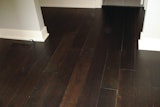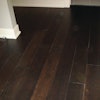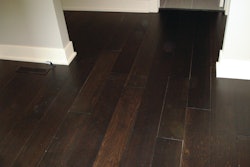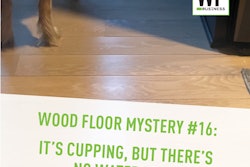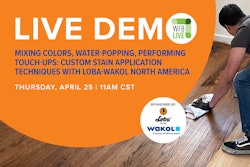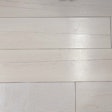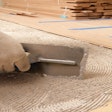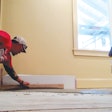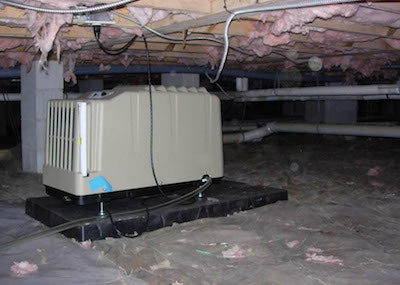
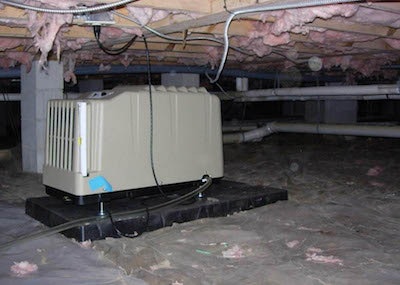 A dehumidifer in a crawl space.
A dehumidifer in a crawl space.
Buildings typically run at some moisture level. We use this level for acclimation guidelines, whether it be a new house or an existing house. Acclimate the floors correctly, and problems should be kept to a minimum.
If long-term moisture levels in the house change, previously installed floors can behave differently.
However, if long-term moisture levels in the house change, previously installed floors can behave differently, and that can cause some issues. One primary reason to install a dehumidifier in a crawl space is to lower moisture to control mold and fungal decay. If you have mold or decay in a crawl space, the floors and house may be fine, but the decay can cause structural damage, and the mold can cause health issues. The way to stop mold and decay is to lower moisture levels. A dehumidifier can do that, as can covering the soil with a vapor retarder membrane and closing vents.
Over-drying means we need a definition of what over-drying is. Is lowering the moisture level such that mold and decay won’t grow considered over-drying? I think not. Most of us don’t want mold or decay in a house. Does the wood or building care how dry it is? Not really. Most things shrink some when they dry, but otherwise are OK. People might care when the humidity gets too low, because mucus membranes dry out. This is common in the winter.
Getting moisture levels stabilized before floors are installed is critical regardless of dehumidification.
From an equipment standpoint, a typical dehumidifier is rated at 80 degrees F and 60% RH. Efficiencies drop when the air is dryer or cooler. You might be able to get the RH down to 30% in a warm, sealed crawl space with lots of dehumidification, but that same crawl space probably dropped below 30% RH in the winter prior to sealing. Without special dehumidification equipment, a crawl space won’t get dryer than about 40% RH.
So back to the original question: Can we over-dry a crawl space? Technically, yes we could. Will we? No. But we may establish a new moisture regime that was dryer than before, and that could cause some issues with flooring. Getting moisture levels stabilized before floors are installed is critical regardless of dehumidification.
RELATED: How Inside Air Affects Wood Floors











